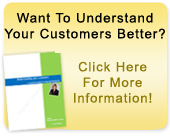I can’t say I’m too sorry to wave farewell to 2011. Whilst professionally it was a good year for me – my Idea to Launch programmeTMgoing off-line when I was invited to deliver it at McGill University’s Centre for Continuing Studies in the Spring and again in the Summer; signing a contract with Business Expert Press in New York for them to publish my book on using questionnaires to understand your clients; teaching International Business Strategy on the prestigious MA-CEMS program at the University of Economics in Prague (www.vse.cz) and being invited to do all the social media training for LDI in Montreal. Oh and I had my first solo painting exhibition and sold three paintings ! But on a personal basis, a few too many friends, former colleagues and relatives took their leave of this world – an explosion in Kuala Lumpur, cancers and early onset Alzheimer’s; and my mum became increasingly fragile which meant even more trips to the UK and will probably result in me leaving Canada after almost 13 years there.
On the world stage 2011 was one heck of a year wasn’t it ? At times I did start to seriously wonder if the Apocalypse was imminent ! As Matthew Norman said in the Daily Telegraph this last Saturday “…2011 established itself as the most extraordinary in memory […] it feels as if a decades worth of news was somehow concertinaed into 12 months” .
In 2011, the UK shivered under a tenacious blanket of snow; the impacts of the earthquakes in Turkey, New Zealand, Myanmar were overshadowed by the catastrophic earthquake and tsunami in Japan that wiped out communities, killed over 15 thousand people and caused the worse nuclear reactor disaster since Chernobyl. Australia started the year with half of Queensland under flood water; the Sindh province of Pakistan was inundated; Thailand suffered the worst floods in decades; parts of Tennessee, Kentucky and Mississippi were declared federal disaster areas. There were landslides too notably in Colombia but East Africa endured an horrendous drought with millions of people at risk of starvation.
A spontaneous and seemingly meaningless wave of riots, arson and looting occurred in the UK; people took to the streets in Greece in the wake of government austerity measures to prevent the country from sliding into bankruptcy; unrest and riots raged in the Yemen and more recently in Syria; Norway was subjected to two terrorist attacks one of which left 69 young people dead. But the Arab Spring saw changes in the political regimes in Tunisia, Egypt and the end of Gaddafi’s rule in Libya. Saudi Arabia granted women the right to vote. We saw the demise of Osama bin Laden and whilst the war in Afghanistan continues, the US has finally pulled out of Iraq.
And of course millions of us enjoyed THE wedding of the year whilst men around the world fantasised about Pippa Middleton whose bridesmaids dress almost stole the show.
The News of the World newspaper closed forever in the wake of a phone tapping scandal and care homes abuse in the UK hit the headlines but England Test cricket defeated Australia and India and brought home the Ashes and of course our own Mark Cavendish won the Maillot Vert in the Tour de France. While the Eurozone was a disaster area with presidents Sarkozy and Merkel pulling the recalcitrant ‘states’ into order, Sarko and Carla’s baby daughter made her discreet arrival at the Élysée Palace and Italy’s President Berlusconi resigned in the midst of child sex scandals.
A sad farewell was said to Václav Havel the playwright, poet and dissident who became the first president of the Czech Republic and in Canada we lost a much respected politician – Jack Layton (the best Prime Minister Canada will never have) and of course we were all saddened by the untimely passing of the innovative Steve Jobs. This was a year for farewells – the music world lost Amy Winehouse, Billy Jo Spears. Hollywood said goodbye to some greats – Elizabeth Taylor, Jane Russell, Anna Massey, Susannah York whilst the world of sports saw Joe Frazier, Severiano Ballesteros take their leave. And of course the UK lost Jimmy Savill who aptly departed this world with one of his trademark cigars burning in an ashtray by his side. And the last Harry Potter movie ever was released.
The 10thanniversary of 9/11 made many of us wonder if terrorism would ever be relegated to the past but the Queen’s historic visit to Eire put the ‘Troubles’ and the bombings firmly in the past and showed that moving on and building a new future is possible if the will is there. Even Myanmar took tentative steps towards reform with Hilary Clinton visiting and meeting with Aung San Suu Kyi.
So what does 2012 have in store for us ? The UK celebrates the Queen’s Diamond Jubilee; London hosts the Olympic and Paralympic Games; Myanmar will hopefully move closer to democracy; Barack Obama may or may not be re-elected; natural disasters will occur; companies will launch and others will fold; the economic crisis will continue to bite – we may even see the demise of the Euro but 2012 has to be better than 2011. And we can do our bit to make it better. We can’t change all the natural disasters but we can make a contribution by being kinder to our environment and we could also be kinder and more tolerant towards those around us.
So I’ll leave you with these wonderful words from the letter Jack Layton wrote to all Canadians a few days before he died of cancer: “My friends, love is better than anger. Hope is better than fear. Optimism is better than despair. So let us be loving, hopeful and optimistic. And we’ll change the world.”





